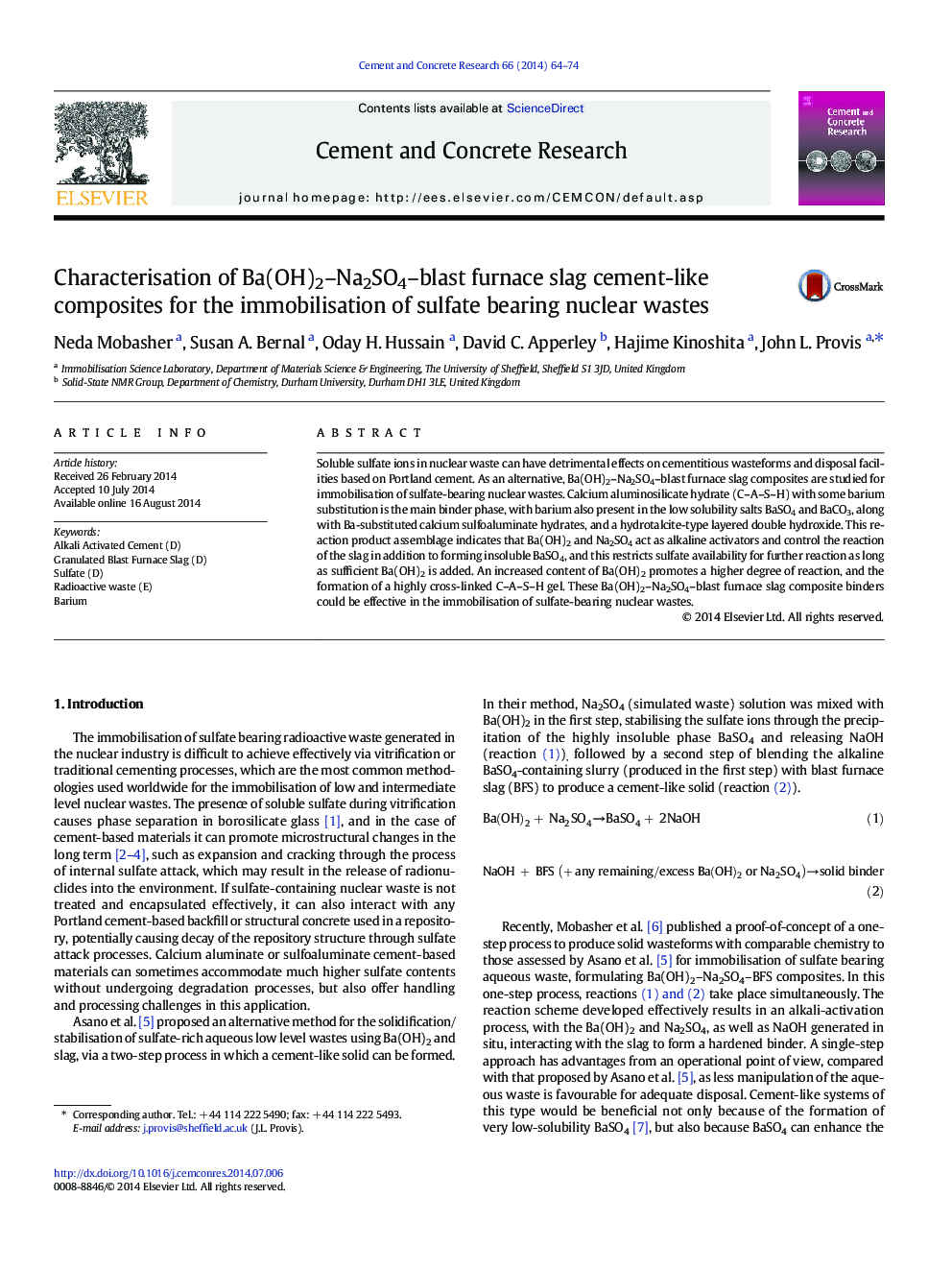| Article ID | Journal | Published Year | Pages | File Type |
|---|---|---|---|---|
| 1456275 | Cement and Concrete Research | 2014 | 11 Pages |
Soluble sulfate ions in nuclear waste can have detrimental effects on cementitious wasteforms and disposal facilities based on Portland cement. As an alternative, Ba(OH)2–Na2SO4–blast furnace slag composites are studied for immobilisation of sulfate-bearing nuclear wastes. Calcium aluminosilicate hydrate (C–A–S–H) with some barium substitution is the main binder phase, with barium also present in the low solubility salts BaSO4 and BaCO3, along with Ba-substituted calcium sulfoaluminate hydrates, and a hydrotalcite-type layered double hydroxide. This reaction product assemblage indicates that Ba(OH)2 and Na2SO4 act as alkaline activators and control the reaction of the slag in addition to forming insoluble BaSO4, and this restricts sulfate availability for further reaction as long as sufficient Ba(OH)2 is added. An increased content of Ba(OH)2 promotes a higher degree of reaction, and the formation of a highly cross-linked C–A–S–H gel. These Ba(OH)2–Na2SO4–blast furnace slag composite binders could be effective in the immobilisation of sulfate-bearing nuclear wastes.
